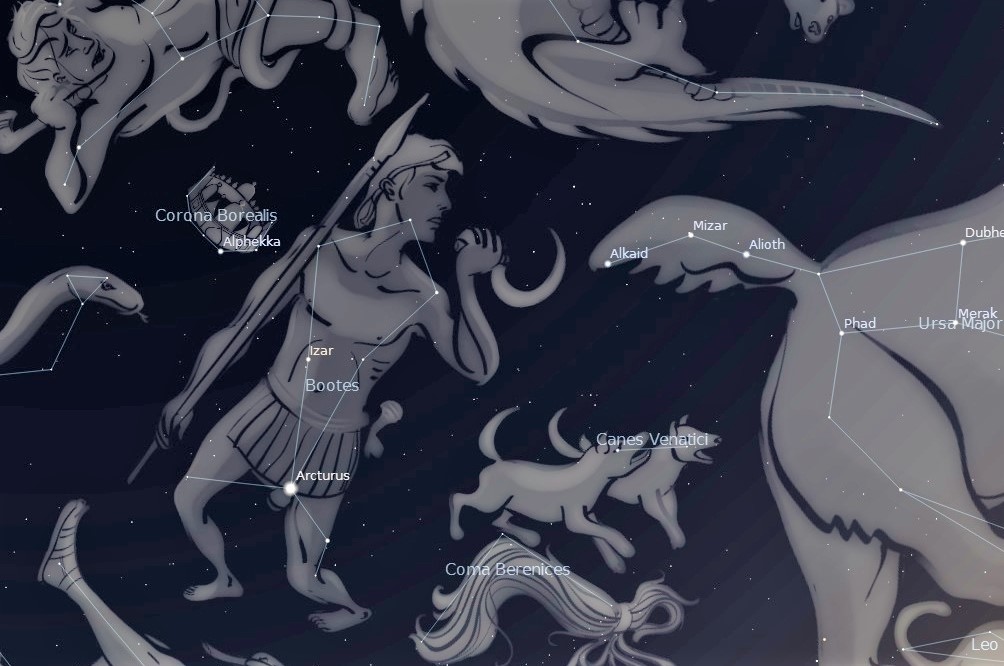This Week’s Sky at a Glance, 2020 August 15 – 22 ~by Curt Nason
With the hot and muggy weather this summer there is nothing like an ice cream to cool you down. If the night sky had a constellation honouring the ice cream cone it would have to be the one we call Boötes (bo-OH-teez). Boötes is easy to pick out because it is anchored by Arcturus, the fourth brightest star of the sky. To identify the star, “just follow the arc (of the Big Dipper’s handle) to Arcturus.” This star is the bottom of the cone and the ice cream is to the left of the Dipper’s handle, somewhat northward where it will stay cold and not melt. The constellation can also pass for a kite or a necktie.
The name Boötes means ox driver but the constellation is often regarded as a bear driver or a ploughman. With his hunting dogs, the Canes Venatici constellation, he is seen chasing the two bears (Ursa Major and Ursa Minor) around the pole. In Britain the Big Dipper is usually called the Plough, and in mythology the goddess of agriculture requested Zeus to honour Boötes in the sky for inventing the plough. I guess he is the John Deere of the night sky, or perhaps Ernest Hamwi who popularized the edible ice cream cone at the 1904 World’s Fair in St. Louis.
Speaking of World’s Fairs, the 1893 and 1933 fairs were held in Chicago. To commemorate technology, the lights for the latter fair were lit using a current generated from photocells and the starlight of Arcturus. It was believed the star was 40 light years distant, so the light reaching them would have been emitted during the previous Chicago fair. We now know Arcturus is only 37 light years away. Several observatories supplied starlight for the opening but, considering the shape of the constellation, it is unfortunate that one of them wasn’t the Lick Observatory in California.
This Week in the Solar System
Saturday’s sunrise in Moncton is at 6:19 am and sunset will occur at 8:27 pm, giving 14 hours, 8 minutes of daylight (6:25 am and 8:30 pm in Saint John). Next Saturday the Sun will rise at 6:27 am and set at 8:15 pm, giving 13 hours, 48 minutes of daylight (6:34 am and 8:18 pm in Saint John).
The Moon is new on Tuesday and with luck a slim 21-hour crescent might be spotted soon after sunset on Wednesday. Jupiter and Saturn are at their best for observing in late evening. This Saturday telescope users can see Jupiter’s moon Io disappear behind the planet at 9:32 pm and reappear from Jupiter’s shadow on the opposite side three hours later. By the end of the week Mars rises at 10:30 pm and it is starting to rival Jupiter in brightness. Venus dominates the morning sky while Mercury is at superior conjunction behind the Sun on Monday.
With astronomy meetings and outreach activities on hold, you can watch the local Sunday Night Astronomy Show at 8 pm and view archived shows.
Questions? Contact Curt Nason.

